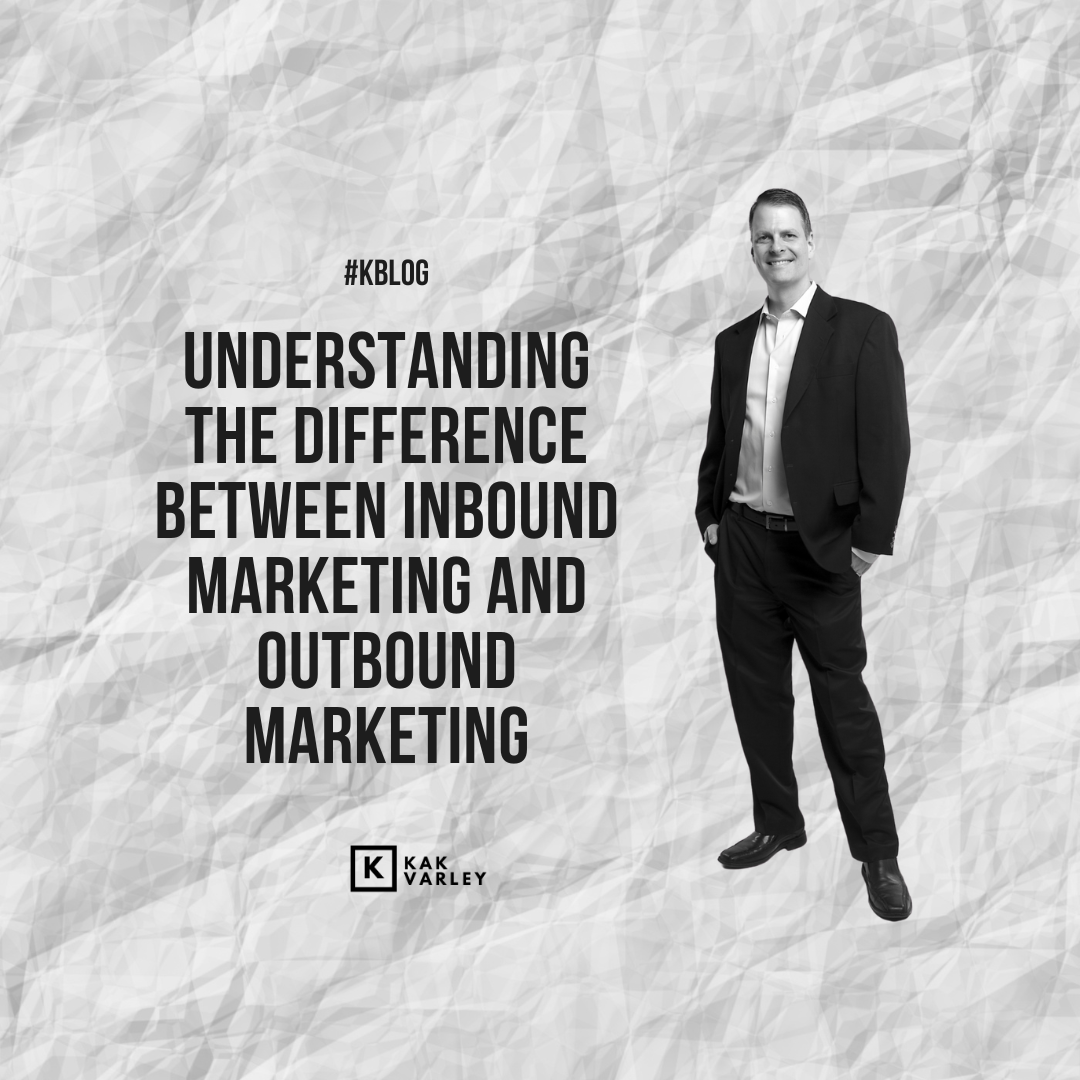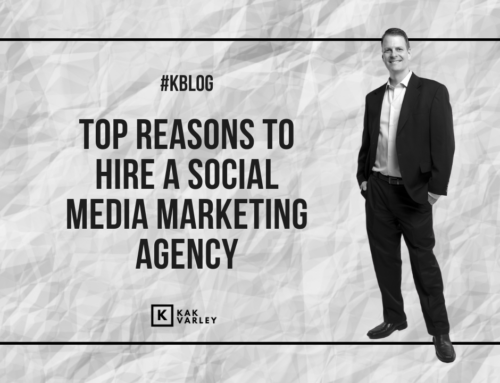
If you’re a marketer, you’ve likely heard the terms “inbound marketing” and “outbound marketing” thrown around. But what do these terms actually mean? And how do they differ from each other? Inbound marketing is a strategy that focuses on attracting customers to your brand by creating valuable content and experiences that address their needs and interests. Outbound marketing, on the other hand, involves reaching out to potential customers through advertising, cold calling, or other forms of interruption marketing.
While both inbound and outbound marketing can be effective in their own ways, they have some key differences that are important to understand. Inbound marketing is often seen as a more customer-centric approach, as it focuses on providing value to the customer and building relationships over time. Outbound marketing, on the other hand, can be seen as more sales-centric, as it is often focused on pushing a specific product or service to potential customers.
This post will explore the differences between inbound and outbound marketing in more detail, and help you understand which approach might be best for your business. Whether you’re a small startup or a large corporation, understanding these two marketing strategies can help you better connect with your target audience and drive more sales.
Understanding Inbound Marketing
Inbound marketing is a marketing strategy that focuses on attracting customers by creating valuable content and experiences tailored to them. This approach is in contrast to outbound marketing, which relies on interrupting potential customers with unsolicited messages. Inbound marketing is an effective way to build brand awareness, generate leads, and ultimately drive sales.
Key Principles of Inbound Marketing
To effectively execute an inbound marketing strategy, you need to keep in mind the following key principles:
- Attract: To attract potential customers, you need to create content that is relevant, helpful, and engaging. This can include blog posts, videos, webinars, and social media content.
- Engage: Once you have attracted potential customers, you need to engage with them by providing them with a great user experience. This can include creating relevant content and building a strong brand that allows the customers to connect and interact with your company
- Delight: To turn potential customers into loyal customers, you need to delight them by providing them with exceptional experiences. This can include creating personalized content, providing excellent customer support, and offering valuable resources. Excellent customer service and support is probably one of the most valuable characteristics with this model.
Inbound Marketing Techniques
There are several inbound marketing techniques that you can use to attract, engage, and delight potential customers. Some of these techniques include:
- Content Marketing: Creating high-quality content that is relevant and helpful to your target audience is a key component of inbound marketing. This can include blog posts, ebooks, videos, and webinars.
- Search Engine Optimization (SEO): Optimizing your website and content for search engines can help you attract more organic traffic to your site. SEO also has a very high ROI when it comes to inbound marketing.
- Social Media Marketing: Creating and sharing content on social media platforms like Facebook, Twitter, and LinkedIn can help you reach a wider audience and engage with potential customers.
- Inbound Sales: Adopting an inbound sales approach can help you build stronger relationships with potential customers by focusing on their needs and providing them with personalized solutions.
Advantages of Inbound Marketing
There are several advantages to using an inbound marketing strategy, including:
- Building Brand Awareness: By creating relevant and engaging content, you can build brand awareness and establish yourself as a thought leader in your industry.
- Generating Leads: Inbound marketing can help you attract high-quality leads who are already interested in your products or services.
- Driving Sales: By providing potential customers with valuable resources and personalized solutions, you can increase your chances of closing sales and driving revenue.
- Cost-Effective: Inbound marketing can be a cost-effective way to generate leads and drive sales, especially when compared to traditional outbound marketing methods.
Overall, inbound marketing is a powerful strategy that can help you attract, engage, and delight potential customers. By creating relevant and valuable content, building strong relationships with your audience, and providing exceptional experiences, you can drive long-term growth for your business.
Understanding Outbound Marketing
Outbound marketing is a traditional marketing technique that involves reaching out to prospective customers and promoting your products or services. It is also known as interruption marketing because it interrupts the audience’s activities with advertising messages. Outbound marketing is often contrasted with inbound marketing, which involves attracting potential customers to your website or business through content marketing, search engine optimization, and social media marketing.
Key Principles of Outbound Marketing
The key principles of outbound marketing are to get your message in front of as many people as possible and to generate leads by targeting a broad audience. Outbound marketing is often used to promote products and services that have a broad appeal, such as consumer goods or services. The goal is to create brand awareness and generate interest in your products or services.
Outbound Marketing Techniques
Outbound marketing techniques include a wide range of methods, such as cold calling, targeted email marketing, billboards, TV and radio ads, trade shows, telemarketing, and print and display ads. These techniques are designed to reach a broad audience and generate leads by promoting your products or services to as many people as possible.
Advantages of Outbound Marketing
One of the advantages of outbound marketing is that it can generate traffic and leads quickly. Outbound marketing techniques can be used to reach a large number of people in a short amount of time. Outbound marketing can also be used to target specific demographics and geographic regions, which can help to increase the effectiveness of your marketing efforts.
Outbound marketing is also useful for generating brand awareness and creating a sales funnel. By reaching out to prospective customers through multiple channels, you can increase the chances of converting leads into sales. Outbound marketing can also help to build your email list and generate data that can be used to improve your marketing efforts.
Overall, outbound marketing can be an effective way to promote your products and services and generate revenue. However, it is important to use outbound marketing in conjunction with inbound marketing and to be mindful of the potential for ad blockers and other obstacles to interrupt your message. By using multiple marketing techniques and targeting your key audience, you can create a comprehensive marketing strategy that effectively promotes your products and services.
Inbound Marketing Vs Outbound Marketing
When it comes to marketing your business, you have two options: inbound marketing and outbound marketing. Both methods have their own pros and cons, and it’s important to understand the differences between them to choose the best marketing strategy for your business.
Pros and Cons of Inbound Marketing
Inbound marketing is a permission-based marketing technique that focuses on attracting prospects to your business through valuable content, social media, and search engine optimization. Here are some of the advantages and disadvantages of inbound marketing:
Pros
- Builds brand awareness
- Cost-effective
- Engages with prospects
- Targets specific audience
Cons
- Takes time to see results
- Requires a lot of effort to create quality content
- Can be difficult to measure ROI
- Can be difficult to compete with larger companies
Pros and Cons of Outbound Marketing
Outbound marketing is a traditional marketing technique that involves pushing your message to your target audience through various channels such as TV, radio, direct mail, and telemarketing. Here are some of the advantages and disadvantages of outbound marketing:
Pros
- Reaches a large audience
- Can be easily measured
- Can generate quick results
- Can be used to target specific audience
Cons
- Expensive
- Can be intrusive
- Low engagement and interaction
- Can damage user experience
Cost Effectiveness
Inbound marketing is generally more cost-effective than outbound marketing. Inbound marketing techniques such as content marketing, social media marketing, and SEO can be done in-house or outsourced to a marketing agency at a lower cost than outbound marketing techniques such as TV advertising, radio advertising, and direct mail.
Engagement and Interaction
Inbound marketing focuses on engaging with prospects through valuable content and social media, while outbound marketing is more focused on pushing messages to a target audience. Inbound marketing provides more opportunities for engagement and interaction with prospects, which can lead to higher conversion rates and better customer relationships.
Targeting and Audience Reach
Inbound marketing targets a specific audience through content marketing, Search Engine Ads and SEO, while outbound marketing reaches a larger audience through various channels such as TV, radio, and direct mail. Inbound marketing allows you to target specific prospects who are interested in your products or services, while outbound marketing allows you to reach a larger audience who may not be familiar with your business.
In other words, both inbound and outbound marketing have their own advantages and disadvantages. It’s important to understand the differences between the two to choose the best marketing strategy for your business. Inbound marketing is generally more cost-effective, provides more opportunities for engagement and interaction with prospects, and allows you to target specific audiences. On the other hand, outbound marketing allows you to reach a larger audience quickly, but can be expensive and intrusive.
Choosing the Right Strategy for Your Business
When it comes to marketing your business, choosing the right strategy is crucial. Inbound and outbound marketing are two popular approaches, but which one is right for your business? In this section, we’ll explore some key factors to consider when making this decision.
Understanding Your Business Needs
The first step in choosing the right marketing strategy is to understand your business needs. What are your goals? What are your products and services? What is your budget? Your answers to these questions will help you determine which approach is best for your business.
For example, if you’re a new business looking to build brand awareness and engage with prospects, inbound marketing may be the way to go. On the other hand, if you’re an established business with a large sales team and a focus on revenue, outbound marketing may be a better fit.
Identifying Your Target Audience
Another important factor to consider is your target audience. Who are you trying to reach? What are their needs and pain points? How do they prefer to consume content and engage with brands?
If your target audience is primarily active on social media and values user experience, inbound marketing may be the best approach. On the other hand, if your target audience is more traditional and values direct communication, outbound marketing may be a better fit.
Evaluating Your Resources
Finally, it’s important to evaluate your resources when choosing a marketing strategy. What is your team’s expertise? What solutions do you have in place to support your strategy? What is your timeline for implementation?
If you have a small team with limited resources, inbound marketing may be a more feasible option. However, if you have a large team with a focus on sales, outbound marketing may be a better fit.
In conclusion, choosing the right marketing strategy for your business requires careful consideration of your goals, target audience, and resources. By understanding these factors and evaluating your options, you can make an informed decision that will help you achieve your marketing objectives.
Conclusion
Inbound and outbound marketing are two different approaches to generating leads and sales for your business. Both methods have their own advantages and disadvantages, and it’s up to you to decide which one is better suited for your business needs.
Inbound marketing is all about creating valuable content that attracts potential customers to your website or social media pages. It’s a more subtle approach that focuses on building relationships and trust with your audience. Inbound marketing is also more cost-effective in the long run, as it relies on organic traffic and word-of-mouth marketing to generate leads.
On the other hand, outbound marketing is a more direct approach that involves reaching out to potential customers through advertising, cold-calling, or email marketing. It’s a more aggressive approach that can yield faster results, but it can also be more expensive and less effective in the long run.
Ultimately, the choice between inbound and outbound marketing depends on your business goals, target audience, and budget. If you’re looking to build long-term relationships with your audience and generate organic traffic, then inbound marketing may be the better choice. If you’re looking for quick results and have the budget to invest in advertising, then outbound marketing may be the way to go.
Remember, there’s no one-size-fits-all solution when it comes to marketing. It’s important to experiment with different strategies and tactics to find what works best for your business.
If you need any inbound marketing, Kak Varley Marketing provides digital marketing agency services to their clients. Which, inbound marketing is one of their main focuses.
Frequently Asked Questions
What are the Main Differences Between Inbound and Outbound Marketing?
Inbound marketing is a strategy that seeks to attract potential customers by providing them with valuable content that addresses their pain points and interests. Outbound marketing, on the other hand, is a strategy that pushes a message out to a large audience in the hopes of generating leads.
How Does Inbound Marketing Generate Leads Compared to Outbound Marketing?
Inbound marketing generates leads by creating content that is designed to attract potential customers to your website or social media pages. This content can take the form of blog posts, infographics, videos, or other types of content that are relevant to your target audience. Outbound marketing generates leads by reaching out to potential customers directly through methods such as cold calling, email marketing, or advertising.
What are Some Examples of Inbound Marketing?
Some examples of inbound marketing include creating blog posts that answer common questions your target audience may have, developing social media campaigns that engage with potential customers, or offering free resources such as ebooks or webinars that provide value to your target audience.
What are Some Examples of Outbound Marketing?
Some examples of outbound marketing include cold calling potential customers, sending out mass emails to a purchased list, or running ads on television or radio.
What are the Advantages and Disadvantages of Inbound Marketing?
Advantages of inbound marketing include the ability to attract highly qualified leads who are already interested in your product or service, the potential for long-term results, and the ability to establish your brand as a thought leader in your industry. Disadvantages of inbound marketing include the time and effort required to create high-quality content, the potential for slow results, and the need for ongoing maintenance of your content.
What are the Advantages and Disadvantages of Outbound Marketing?
Advantages of outbound marketing include the ability to reach a large audience quickly, the potential for quick results, and the ability to generate leads without having to create content. Disadvantages of outbound marketing include the potential for low-quality leads, the potential for a negative brand image if your message is not well-received, and the need for a significant budget to run successful campaigns.
#kakvarley #kakapproved #ktip #kblog



